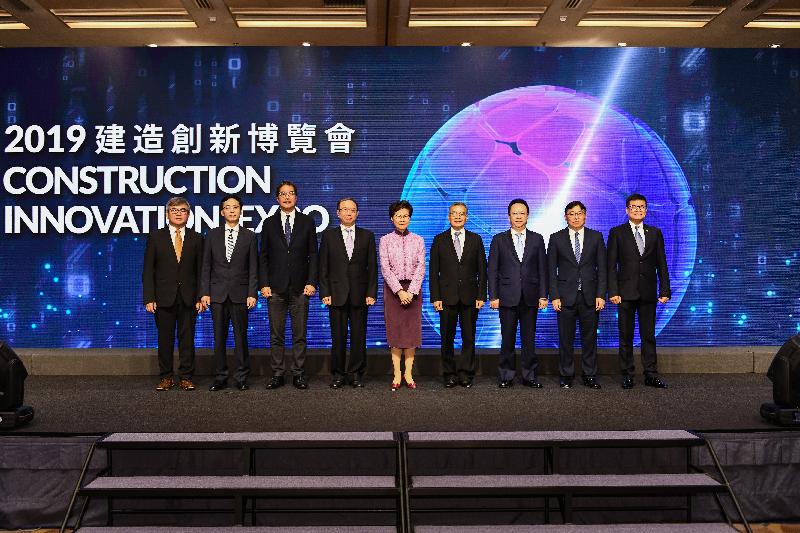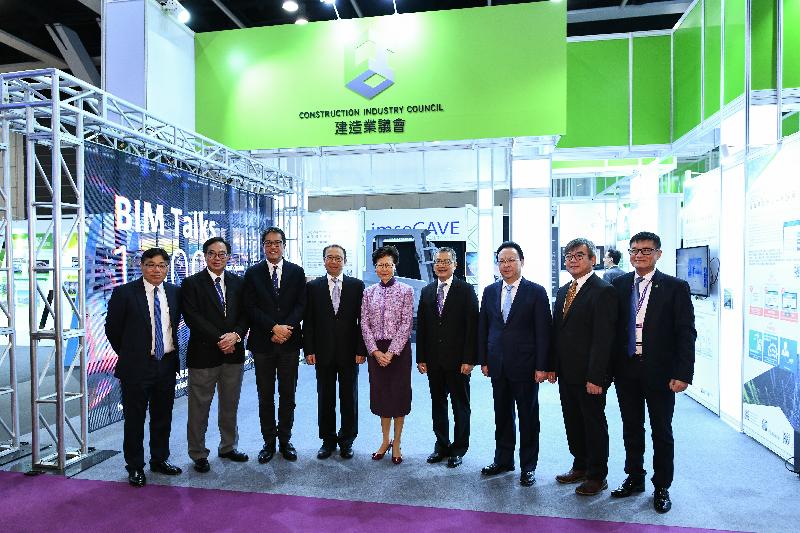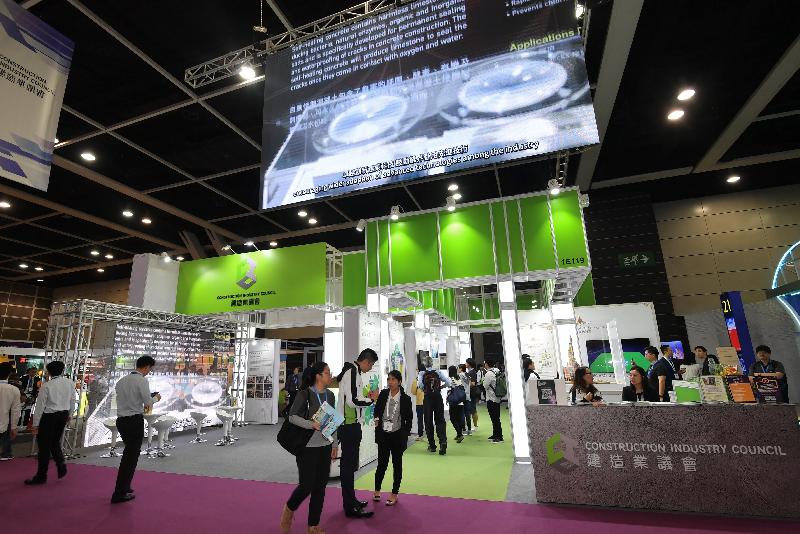LCQ6: Conducting elections in fair and just manner
Following is a question by the Hon Elizabeth Quat and a reply by the Secretary for Constitutional and Mainland Affairs, Mr Patrick Nip, in the Legislative Council today (December 18):
Question:
The District Council (DC) Ordinary Election was held on the 24th of last month. The Electoral Affairs Commission received 7 460 relevant complaints, about 2 000 of which involved voting arrangements. Some members of the public have expressed worries that similar problems may occur in the Legislative Council General Election to be held next year. On ensuring that elections be conducted in a fair and just manner, will the Government inform this Council:
(1) as a number of electors claimed that upon their arrival at the ballot paper issuing desk in the polling station for the first time on the polling day of the aforesaid DC election, they were informed that the particulars registered in respect of their names on the Register of Electors had been crossed out (i.e. indicating that they had been issued with a ballot paper earlier), and they were therefore issued only with a "tendered" ballot paper which would not be counted, rendering them unable to exercise their voting rights, whether the Government had taken measures to guard against this situation before the election was held; if so, why such situation still occurred; of the new measures put in place to prevent the recurrence of such situation in the next election;
(2) as it has been reported that in response to calls on the Internet, some people queued up repeatedly outside polling stations on the polling day of the aforesaid DC election, so as to create long queues to deter electors from casting their votes, resulting in some people who were in a hurry as well as frail elderly persons and persons with disabilities who were unable to wait for a long time giving up voting, whether the law enforcement agencies have looked into this situation; if so, of the details; if not, the reasons for that; of the new measures put in place to prevent the recurrence of such situation in the next election; and
(3) as the current voting procedure comprises entirely manual operations (including verifying the identity of electors, issuing ballot papers and recording that on the Register of Electors, voting by using a stamp, and counting votes), which is error-prone and vulnerable to fraudulent acts, whether the Government will use electronic voting in the next election; if so, of the details; if not, the reasons for that?
Reply:
Mr President,
My reply to the Hon Elizabeth Quat's question is as follows:
The sixth term District Council Ordinary Election (the Election) was held on November 24 this year. With the number of electors and voter turnout reaching a record high, a total of 452 District Council Members were elected. Held in the midst of instability in society, the Election had faced unprecedented challenges. Competition was fierce like never before as none of the some 400 constituencies were uncontested. We saw a lot of irresponsible speech and behaviour that disregarded the fairness of the Election during the process. For instance, public appeals were made to confiscate the identity cards of the elderly, some candidates were threatened during the canvassing activities while others were targeted by petrol bombs. There were also incidents involving damages and arson of candidates' offices. Some even spread rumours that the Election had been cancelled or rescheduled. Notwithstanding this, the polling and counting of the Election was concluded in an open and transparent manner and was overall peaceful and orderly under the scrutiny of candidates and the public.
The EAC will refer complaints on alleged infringement of the law to relevant law enforcement agencies. We understand that relevant law enforcement agencies have been following-up on the reports or complaint cases involving suspected breach of law. Besides, if candidates or electors think that the Election is interfered by corrupt or illegal conduct, or there is a material irregularity in relation to the Election, they may lodge election petitions to question the result of the Election under Section 49 and 50 of the District Council Ordinance, which will be determined by the court. The results of an election can be challenged on the various grounds, including:
(1) corrupt or illegal conduct was engaged in by or in respect of the elected person at or in connection with the election; or
(2) corrupt or illegal conduct was generally prevalent at or in connection with the election; or
(3) material irregularity occurred in relation to the election, or to the polling or counting of votes at the election.
For this Election, the deadline for lodging election petitions is January 29 next year. As of today, one person has lodged an election petition.
(1) For the statutory procedures of issuing ballot papers, only registered electors whose names appear on the 2019 final register (FR) of electors may vote at the 2019 District Council Ordinary Election. After an elector has arrived at a designated polling station, pursuant to the Electoral Affairs Commission (Electoral Procedure) (District Councils) Regulation (the Regulation), the electoral staff would inspect at the ballot paper issuing desk the original of the elector's Hong Kong Permanent Identity Card or other identity documents permitted by the legislation (such as the HKSAR Passport), and give a ballot paper to the elector if the staff is satisfied about the elector's identity. A line must be placed in the register of electors to cross out the name and number of identity documents of the elector concerned in order to denote that the ballot paper has been issued to the elector.
Pursuant to the Regulation, the Presiding Officer (PRO) may, at the time a person applies for a ballot paper, ask the person to confirm his/ her identity and that he/ she has not voted in the Election, and may give a ballot paper to him/ her only upon the PRO's satisfaction of the answer provided. Candidates, their election or polling agents observing in the polling station(s) may request the PRO to ask the above questions.
Pursuant to section 60 of the Regulation, if the register shows that a person has already been issued with a ballot paper when that person applies for a ballot paper, and if the PRO is not certain whether the same person has been issued with a ballot paper earlier, the PRO must issue to that person a ballot paper endorsed on the front of it with the words "�複" and "TENDERED". "TENDERED" ballot papers are not to be counted, but if there is any dispute after the conclusion of the election, that ballot paper can be admitted as evidence in election petitions. As of December 13, the EAC has received 16 complaints in relation to the issuance of "TENDERED" ballot papers.
In accordance with section 15 of the Elections (Corrupt and Illegal Conduct) Ordinance (the ECICO), applying for a ballot paper in the name of another person, or, having voted at the Election, applying at the same Election for a ballot paper in the person's own name is liable on conviction to a fine of $500,000 and to imprisonment for seven years.
(2) For the queuing arrangements for obtaining a ballot paper on the polling day, pursuant to the Regulation, when an elector is issued with a ballot paper, he/ she must immediately go into a voting compartment and mark the ballot paper without undue delay, and must leave the polling station as soon as he/ she has put the ballot paper into the ballot box. If an elector intentionally makes repeated requests for a ballot paper in order to obstruct the poll, the PRO may decline his/ her requests. If the PRO considers that the elector has voted at the Election and applies at the same Election for a ballot paper in his/ her own name, the PRO may request a police officer to arrest the person concerned, pursuant to the Regulation. Pursuant to the ECICO, a person engages in corrupt conduct at the Election if the person, by a deception, obstructs or prevents another person from voting at the Election. Pursuant to the ECICO, such person is liable on conviction to a fine of $500,000 and to imprisonment for seven years.
The cumulative voter turnout rate of this term's District Council election had reached a record high of 71.2 per cent, and close to three million voters had casted their votes. In the first three hours after the commencement of the poll, a total of 720 000 voters had already casted their votes, which was three times the figures of the last election. Queues appeared in many polling stations. We note that crowd control arrangements were implemented at many polling stations to flexibly handle the long queues of electors on the polling day. The very large scale of the Election also meant that we had to set up more than 610 polling stations, as well as recruit over 20 000 electoral staff and deploy more than 10 000 staff from the Hong Kong Police Force, Fire Services Department, Civil Aid Service, etc. to provide support on the polling day. We will review the polling arrangements, recruitment and training of electoral staff, as well as the operational guidelines, etc., with a view to identifying areas with room for improvement. The EAC must, within three months of the conclusion of the Election, submit a report to the Chief Executive to review the electoral arrangements, including its preparatory work, polling and counting arrangements, publicity, etc., and make recommendations. At the same time, the Constitutional and Mainland Affairs Bureau will seriously review the experience of the Election with Registration and Electoral Office (REO) to enhance the electoral arrangements of the Legislative Council General Election next year.
(3) On the issue of using technology, we have been proactively studying ways to electronise different stages of the election throughout the years. However, we must strike a balance among the need of using technologies, efficiency, security risks, privacy protection and public trust, etc. before introducing any arrangements. While we had consulted the Legislative Council (LegCo) on some of the proposals in the past, such proposals could not be implemented in the end due to the diverse views received.
The direction of electronisation mainly involves three aspects, namely issuing ballot papers in an electronic manner, electronic voting as well as electronic counting. In relation to the issuance of ballot papers, under the existing arrangements, REO arranges for two electoral staff to issue ballot papers together, in order to minimise human error and ensure that the election is conducted in an honest and fair manner. REO is now studying the use of an electronic poll register, with a view to increasing the efficiency and accuracy when issuing ballot papers.
As for electronic voting, we have looked into the experiences of overseas countries/regions, and found that a number of issues are encountered in adopting electronic voting, including the system being hacked leading to the election result being affected, disruption of voting due to malfunctioning of electronic voting devices, high cost incurred in procuring electronic voting devices, limited useful life of the devices which will soon become outdated etc. From the perspective of risk management, information security and cost-effectiveness, etc., we consider that such problems must be properly resolved before electronic voting can be introduced. There must also be sufficient discussion in the community in deciding whether trade-offs are to be made.
In relation to electronic counting, we have already consulted the LegCo Panel on Constitutional Affairs earlier. It is our target to conduct a demonstration in some traditional functional constituencies with fewer number of electors in the LegCo election to be held next year.
Thank you, President.



